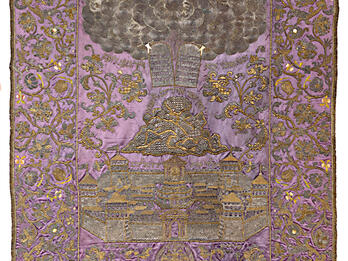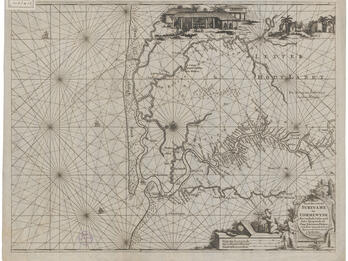Early Modern Egodocuments
The early modern period witnessed a proliferation of Jewish "egodocuments"—first-person texts where authors reveal themselves.
It is doubtful whether many contemporary historians would agree with the famous statement by the eminent Swiss historian Jacob Burckhardt in The Civilization of the Renaissance in Italy (published in 1860), that individualism and “the discovery of man” were among the most significant developments of the Renaissance. In Burckhardt’s view, the people of the Middle Ages always defined themselves as belonging to a certain collective, while during the Renaissance, man became a spiritual individual and recognized himself as such. But even though Burckhardt’s statement is seen today as simultaneously too general and too extreme, it does contain a kernel of true historical insight regarding the change that took place with the Renaissance.
The Posen Library includes many “Egodocuments,” a term coined by the Dutch Jewish historian Jacques Presser (1899–1970) in the 1950s. In a paper delivered in Amsterdam in 1969, that gifted historian defined such texts as documents in which an ego deliberately or accidentally discloses or hides itself. It is beyond all doubt that in Jewish society of the early modern period, as in European society in the period between Petrarch and Descartes, a growing number of texts were written in the first person. In them, the authors relate the story of their lives and display a decided self-awareness. This phenomenon stands out principally in Western Europe, though not only there.
Autobiography, Biography, and Travelogues
Among the best known of the early modern biographies in the Posen Library is the penetrating memoir by Uriel da Costa, the New Christian from Portugal who returned to Judaism in Amsterdam and entered into a confrontation with the community because he was unable to reconcile himself with rabbinic (as opposed to biblical) Judaism. Uriel da Costa was excommunicated by the community and forced to undergo a humiliating ceremony in the synagogue in which he publicly asked forgiveness. He wrote his account shortly afterward and subsequently decided to take his own life. In this section we also present passages from the autobiography of the Venetian rabbi Leone (Judah Aryeh) Modena, which are fascinating in their open self-revelation. Modena discusses the tensions in his married life without disguising them, as well as his weakness for card playing, a lifelong addiction and one through which he repeatedly lost money. By contrast, Glikl Hamel, a gifted woman from Hamburg, managed the family business with independence and courage. Her colorful memoirs offer an unusual window into her life, offering the reader a rich mix of many of the personal concerns related to raising and marrying off her thirteen children, as well as the pressing economic demands of a business that involved travel to European trade fairs.
Authors of all sorts of works also commonly included, as part of a formal introduction to a text, the circumstances that led to the composition of the book. These could on occasion amount to a lengthy autobiographical account, and we have included several interesting examples, such as those by Abraham Saba and Isaac ‘Akrish, which tell the stories of their exiles from Spain. Some also appear elsewhere in the volume, where they illuminate other specific aspects of the Jewish experience.
Autobiographical testimony was also produced under extraordinary circumstances. The life story of Isaac de Castro Tartas was recounted to the Inquisition in Lisbon during a trial at which he was sentenced to be burned at the stake. Anna del Monte, a young Jewish woman from a wealthy family in Rome, was kidnapped around the middle of the eighteenth century; her captors intended to force her to be baptized a Christian. After she managed to free herself, she documented the story of her captivity in detail and the efforts invested in her conversion.
Here, too, the reader will find a very personal excerpt from the Tractatus de intellectus emendatione (Treatise on the Emendation of the Intellect) by Baruch Spinoza, in which the philosopher describes, with his usual acuity, how he came to the decision to become a philosopher committed to the search for truth. In contrast with Spinoza’s rationalism, we have also included passages from mystical autobiographies: the visions of Asher Lemlein, Solomon Molkho, Ḥayim Vital, Abraham Yagel, Joseph Karo, and the Sabbatean prophet Abraham Michael Cardoso.
The genre of egodocuments also includes passages from travelogues written by Jews describing their journeys through different countries. They sometimes did this as part of personal correspondence, as in letters addressed to their families, and sometimes as independent works in their own right, such as memoranda and reports, or in descriptions of travels to the land of Israel.
Dreams
Descriptions of dreams have been common in Jewish culture since time immemorial, and they are egodocuments in every sense of the word. In the early modern period as well, Jews regarded dreams with holy awe and tried to interpret them and find hidden divine messages within them. Here readers can discover passages from the dreams of Isaac Luria, Isaac ben Elyakim of Poznań, and Raphael Mordechai Malki, as well as a section of a tractate on the interpretation of dreams written in Spanish by Moses Almosnino of Salonika.
Wills
Ethical wills, a genre with deep roots in late antique rabbinic literature that flourished through the medieval period, similarly belong to the category of egodocuments. Here, among others, we present the ethical wills of three representatives of the Horowitz family, from three different generations, as well as that of Luis de Carvajal, a crypto-Jew who in 1596 was sentenced to be burned at the stake by the Inquisition in Mexico. Domestic wills, written by Jewish men and women in various countries, commence with the 1549 testament of Ovadiah Sforno, written in Bologna, and include three wills left by otherwise unknown women from mid-eighteenth-century New York.



